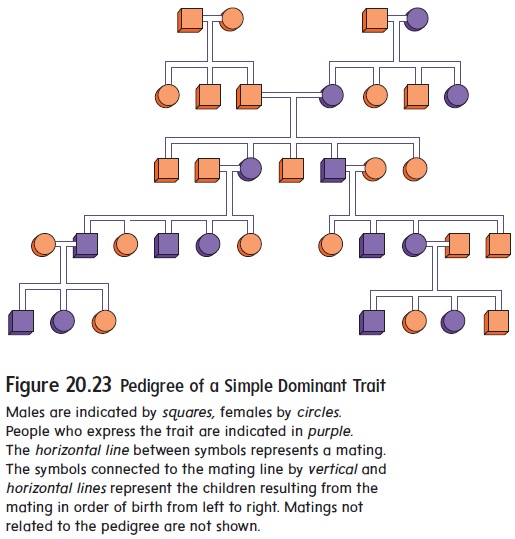Chapter: Essentials of Anatomy and Physiology: Development, Heredity, and aging
Genetic Disorders and Counseling
Genetic Disorders
Genetic disorders are caused by abnormalities in a person’s geneticmakeup—that is, in his or her DNA. They may involve a single gene or an entire chromosome. Some genetic disorders result from a mutation (mū-tā′ shŭn; to change), a change in a gene that usu-ally involves a change in the nucleotides composing the DNA . Mutations occur by chance or can be caused by chemicals, radiation, or viruses. If mutations occur in reproductive cells, abnormal traits resulting from these mutations can be passed from one generation to the next.
The importance of genes is dramatically illustrated by situa-tions in which the alteration of a single gene results in a genetic disorder. For example, in phenylketonuria (fen′ il-kē′ tō-nū′ rē-ă) (PKU), the gene responsible for producing an enzyme that convertsthe amino acid phenylalanine to the amino acid tyrosine is defective. Therefore, phenylalanine accumulates in the blood and is eventually converted to harmful substances that can cause mental retardation.
Genetic Counseling
Genetic counseling includes predicting the possible results ofmatings involving carriers of harmful genes and talking to parents or prospective parents about the possible outcomes and treatments of a genetic disorder. With this knowledge, prospective parents can make informed decisions about having children.

The first step in genetic counseling is to attempt to deter-mine the genotype of the individuals involved. A family tree, or pedigree, provides historical information about family members.Figure 20.23 shows the pedigree for a simple dominant trait, such as Huntington disease, a neurological disorder. Sometimes, knowing the phenotypes of relatives makes it possible to determine a person’s genotype. As part of the process of collecting informa-tion, a karyotype can be prepared. For some genetic disorders, the amount of a given substance, such as an enzyme, produced by a carrier can be tested. For example, carriers for cystic fibrosis pro-duce more salt in their sweat than is normal.
Related Topics